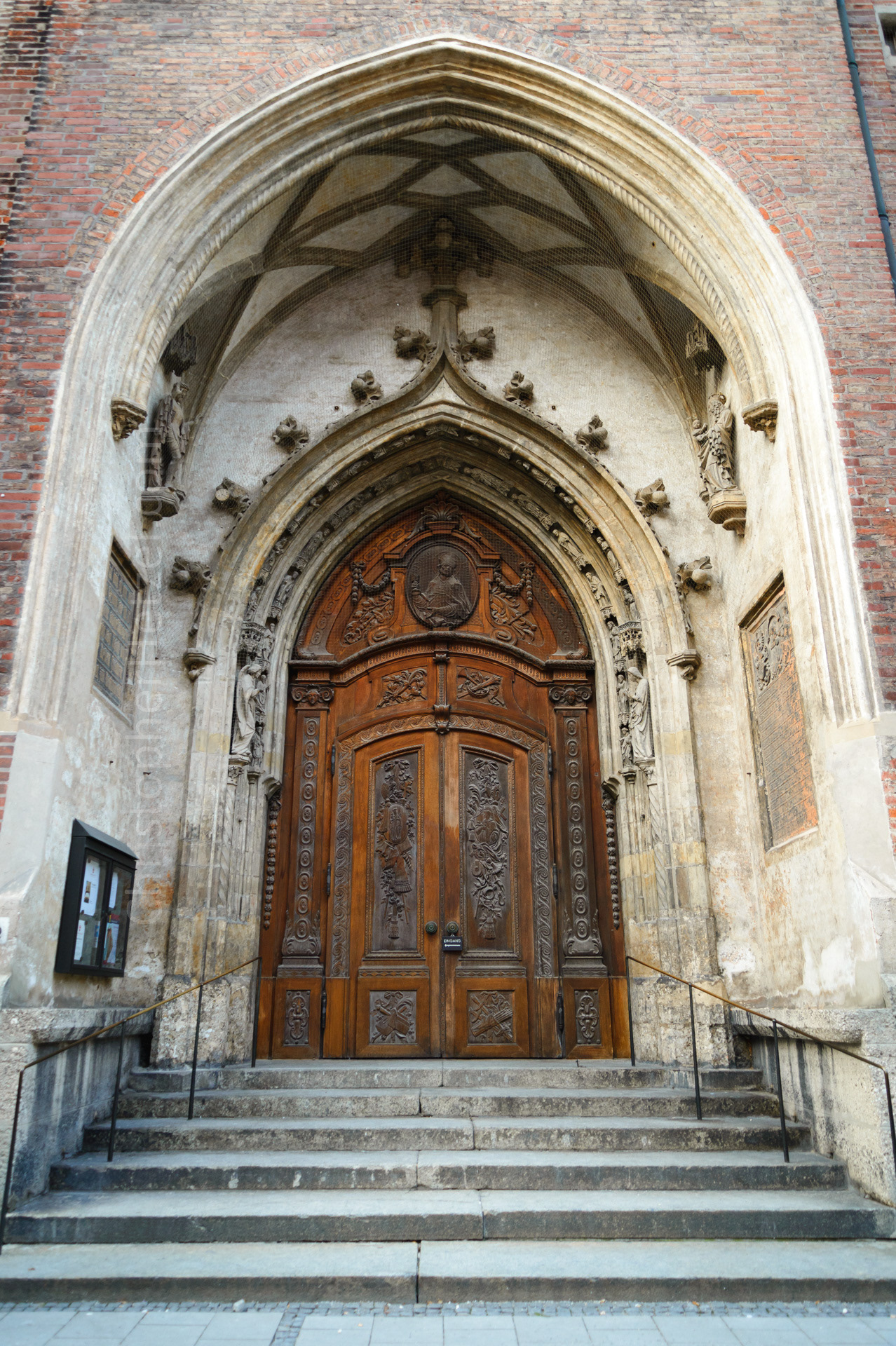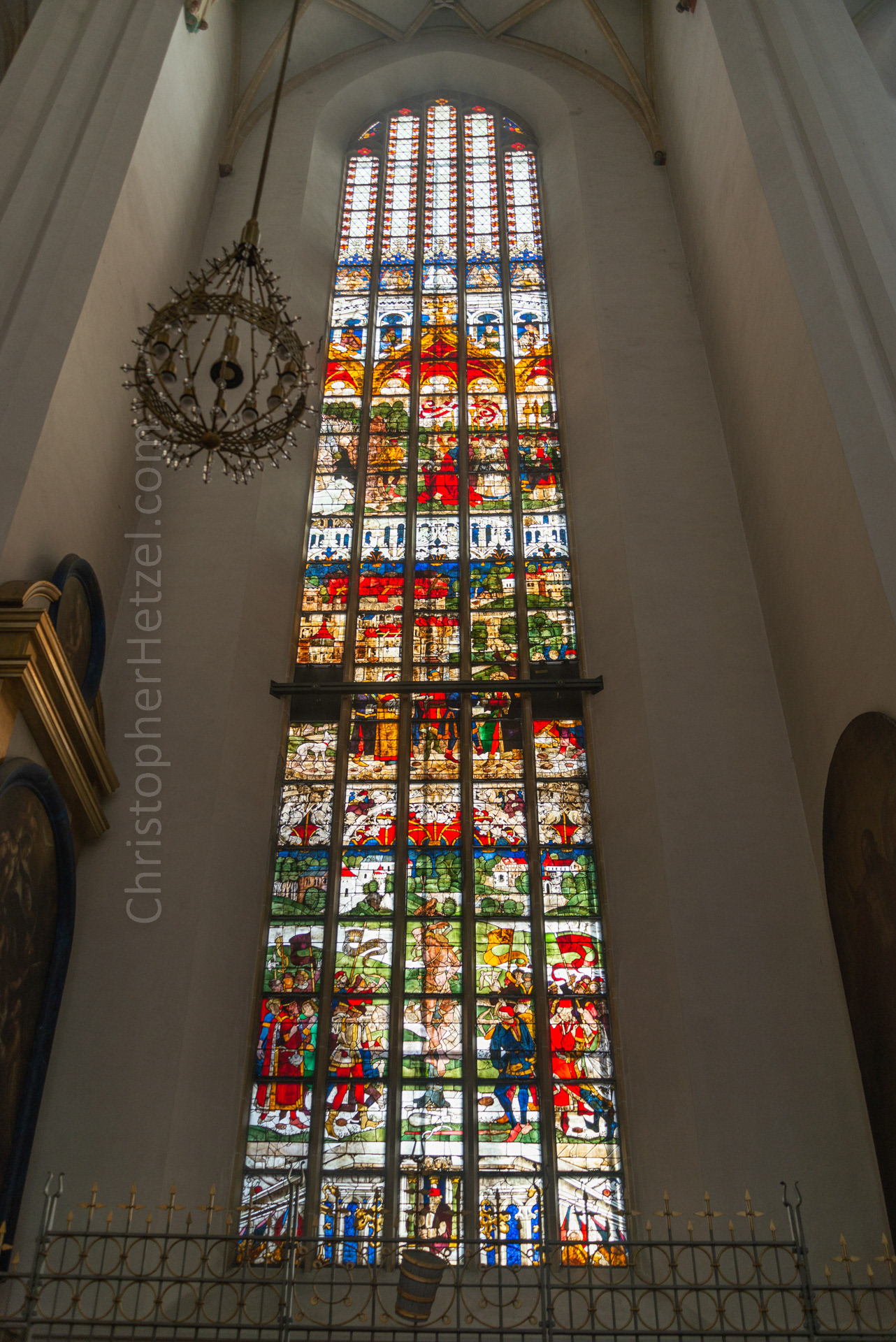The catholic cathedral in Munich, Germany, known as the 'Münchner Dom' (Munich Cathedral), the 'Dom zu Unserer Lieben Frau' (the 'Cathedral of Our Dear Lady'), or most commonly as the 'Frauenkirche' by locals. Jennifer and I visited the cathedral a couple times during our holiday in Munich. We experienced a bit of the church's Christmas eve service and returned the next morning after its Christmas morning service (there was still incense in the air), to more properly tour the interior, including its stained glass windows and collections of 14th-18th century Gothic and Renaissance artwork and sculpture.
The Frauenkirche was erected in the late Gothic style within only 20 years' time by German bricklayer and architect, Jörg von Halsbach, beginning in AD 1468. The completed church was consecrated in 1494, but the two towers were not fully finished in their current form until 1525. The church's red brick construction, a somewhat unusual choice at the time, was due to financial issues and because there wasn't a convenient stone quarry nearby. The building has capacity to house 20,000 standing people.
The cathedral suffered severe damage during World War II, from Allied bombing. The roof collapsed, one of the towers suffered severe damage, and much of the church's interior furnishings were destroyed by bombings or lost in the war's aftermath. A multi-stage restoration effort began soon after the war, lasting until its full completion in 1994.



























Back to Germany